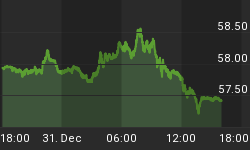On November 3, 2009, the Reserve Bank of India (RBI) announced the purchase of 200 tonnes of gold from the International Monetary Fund (IMF) for US$6.7 billion. This represents the largest one-time central bank purchase in recent history, reminiscent of the period of steady US purchases of bullion in the 1930s and 1940s. The purchase was an official off-market transaction and was executed during October 19 - 30 at market-based prices averaging US$1,045 an ounce.
The deal came as a surprise to many analysts who speculated that China would be the most likely buyer of IMF's long-planned bullion sale of 403.3 tonnes. The deal raises India to the twelfth largest single holder of bullion. India is the largest consumer of gold and in addition to the official gold reserves of the RBI, it is estimated that its citizens own another 15,000 tonnes in private holdings.

India's foreign exchange reserves held at the central bank totalled US$285.5 billion on October 23, of which gold comprised just over US$10 billion. This latest purchase will lift India's share of gold holdings from nearly four percent to approximately six percent.
News of the purchase resulted in a sharp lift in the price of gold, bringing it to a new nominal high in terms of US dollars for several reasons:
- Reduced anxiety over the possibility of a large IMF bullion sale on the open market.
- Further evidence of central banks switching from the position of net sellers to net buyers.
- The European central bank agreement to limit gold sales to 400 tonnes per year is now half completed as it includes the IMF.
- Increased speculation that China will purchase the remaining half of the IMF gold for sale as part of a strategy to diversify out of US dollars.
The speed of India's purchase following the formal approval in September for the IMF to sell a portion of its gold holdings also surprised investors. This event renews confidence in the metal's value and will likely encourage increased participation in the gold market.
















